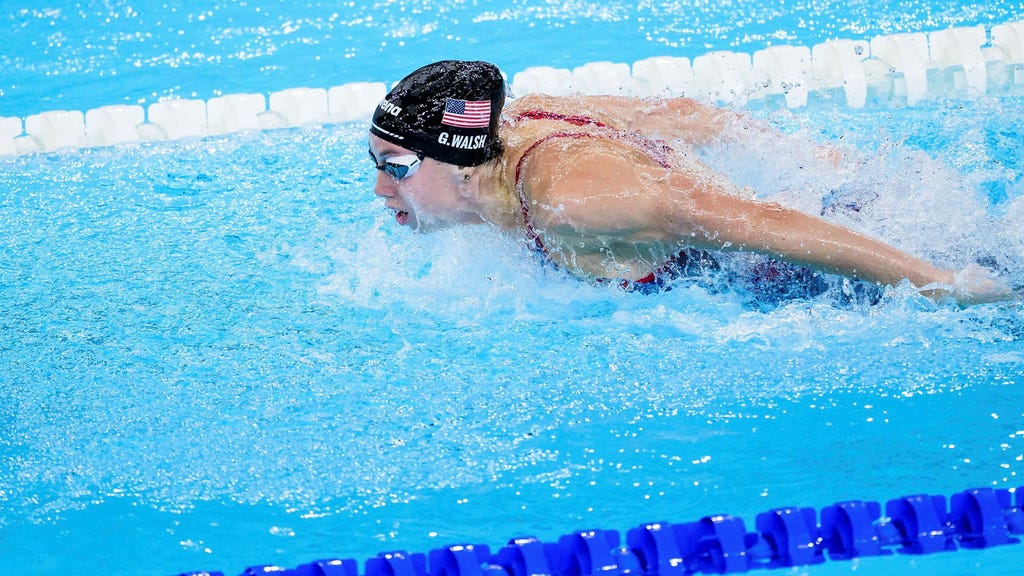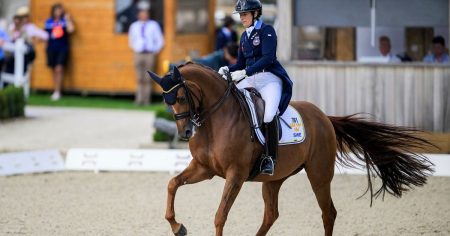Therese Alshammar’s longstanding world record in the 50-meter butterfly (short course) finally succumbed to the relentless march of time and the prowess of a new generation of swimmers. Set in November 2009 at a World Cup event in Singapore, Alshammar’s time of 24.38 seconds, achieved with the aid of the then-controversial ”super suit,” stood as a benchmark for an astounding 15 years. This remarkable longevity made it the oldest women’s world record in short-course swimming, a testament to Alshammar’s exceptional talent and the enduring power of her performance. The record’s eventual fall was anticipated, especially at a high-stakes competition like the World Championships, but the manner and timing of its demise proved stunning.
American swimmer Gretchen Walsh, a rising star in the world of competitive swimming, shattered Alshammar’s record in the preliminary heats of the 50-meter butterfly at the World Championships. Walsh’s time of 24.02 seconds not only eclipsed the previous record but did so by a significant margin of 36 hundredths of a second. Her dominance in the heats was further underscored by the substantial gap of 76 hundredths of a second separating her time from the next fastest qualifier. This commanding performance sent shockwaves through the swimming world, signaling the arrival of a new force to be reckoned with.
The unexpected nature of Walsh’s record-breaking swim in the preliminaries added to the drama and excitement surrounding the event. While the eventual breaking of Alshammar’s record was anticipated, most observers expected it to occur in the later stages of the competition, perhaps even the final. Walsh’s early dominance disrupted these predictions and injected a renewed sense of unpredictability into the proceedings. Her performance underscored the inherent dynamism of competitive swimming, where records are constantly challenged and even the seemingly unbreakable can fall prey to exceptional talent and determination.
In her post-race interview, Walsh displayed a mix of humility and ambition. Acknowledging the significance of her achievement, she expressed pride in becoming part of the event’s rich history. However, she also emphasized her belief that records are meant to be broken, suggesting that her own record-breaking swim might be just another step in the ongoing evolution of the sport. Despite the magnitude of her accomplishment, Walsh maintained a focus on continuous improvement, noting specific areas in her technique, such as her turn, that she felt could be refined. This dedication to self-improvement, even in the face of resounding success, speaks volumes about her character and drive to excel.
Walsh’s remarkable swim also served as a powerful reminder of the transformative impact of technological advancements in swimming. While Alshammar’s record was set during the era of the now-banned ”super suits,” known for their buoyancy and drag-reducing properties, Walsh achieved her record-breaking time without the benefit of such technological enhancements. This highlights the progress made in training techniques, athlete development, and the overall evolution of the sport, demonstrating that even in the absence of performance-enhancing apparel, swimmers are continuing to push the boundaries of human potential.
Looking ahead, Walsh expressed her desire to further lower the record, setting her sights on breaking the 24-second barrier. This ambitious goal, coupled with her evident talent and dedication, suggests that the 50-meter butterfly event could witness further record-breaking performances in the near future. The competition also highlighted the strong performance of other swimmers, such as Sara Junevik, whose time, though not record-breaking, placed her among the top contenders, further demonstrating the depth and competitiveness of the field. With the semi-finals and finals still to come, the anticipation surrounding the event continued to build, promising further excitement and the possibility of even more dramatic performances.














